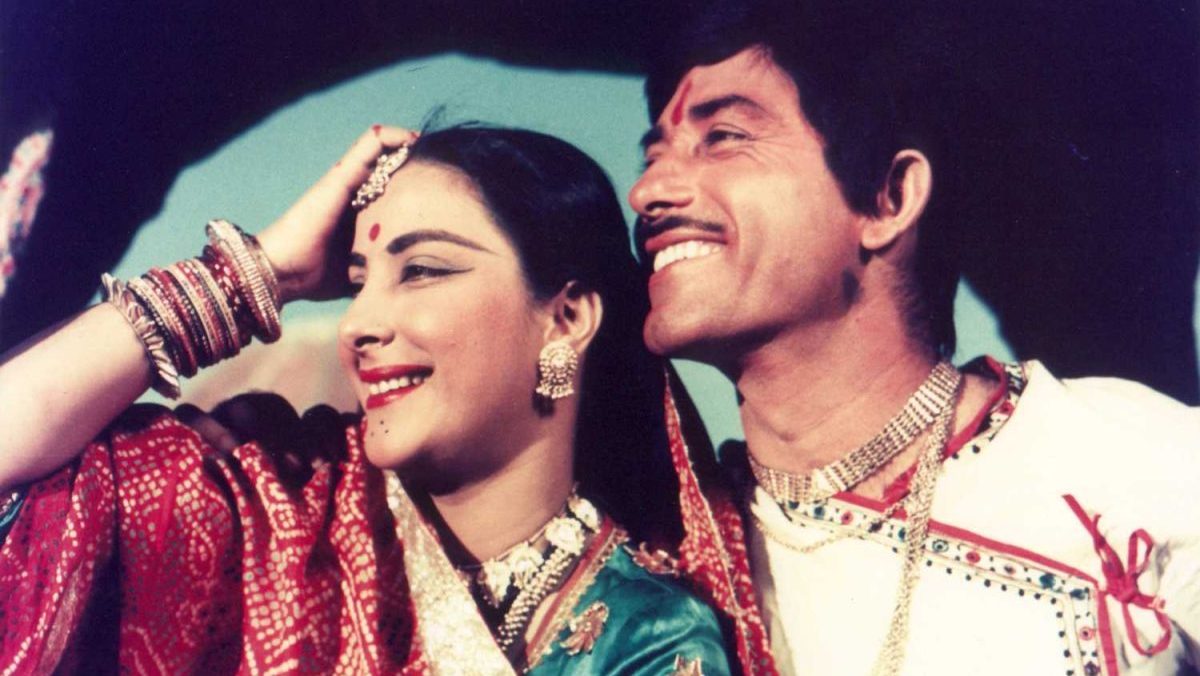10 must-watch Bollywood movies, ranked

So, you’re interested in Bollywood movies. Alright, I’ve got some recommendations for you. (Note that this list will not have films like Danny Boyle’s award-winning Slumdog Millionaire. We are going all Indian written and directed films. No continued Western imperialism here.)
What is Bollywood?
Let me briefly explain what “Bollywood” means for the people in the back. First, the term refers to the Hindi-language film industry based in Mumbai or Bombay before 1995. The first known Indian feature, Raja Harishchandra (1913), and the first sound film, Alam Ara (1931), were focused on Indian folklore and mythology. The success of the pictures led to film studios being developed in Bombay (now Mumbai), Calcutta (Kolkata), and Madras (Chennai). Filmistan Studio (started in 1943) and Raj Kapoor’s RK Studios (1948) became significant production houses.
In the Golden Age of Indian film (1940s-60s), filmmakers like Satyajit Ray, Guru Dutt, and Mehboob Khan came to the fore, with films that will be mentioned in the list. The so-called “Masala” era brought genre-blending (and bending) and the emergence of the “angry young man” persona, as popularized by actor Amitabh Bachchan. The evolution of the ’90s saw a shift toward the inclusion of romantic comedies and dramas, with a focus on NRI (Non-Resident Indian) audiences. 2001’s Lagaan also earned an Oscar nomination for Best Foreign Language Film.
Bollywood is the world’s largest film industry on raw film production and has become a significant cultural export. Of course, the musical numbers are key features, as are the colorful, elaborate productions—though this has changed in recent decades with the development of more hardboiled films.
Alright? Let’s get to the list.
10. Mother India (1957)
Directed by Mehboob Khan, Mother India is arguably the most influential film in Indian cinema history. This is an epic, long-spanning drama chronicling the life of Radha (portrayed by Nargis), a poor village woman struggling to raise her sons while surviving an unscrupulous landlord. The film investigates female empowerment, class warfare, and conflicts between moral duty and maternal love. It is one of the first Technicolor films made in the country. It introduced the self-sacrificing Indian mother archetype and set a high standard for production value.
9. Sholay (1975)
A so-called “curry western” that follows two criminals hired by a retired police officer to capture a bandit—the villainous Gabbar Singh, one of film history’s most memorable and influential characters. Ramesh Sippy’s picture, with R.D. Burman’s legendary soundtrack, defined the “masala” film. It also pioneered 70mm film, and its sound design (stereophonic sound) would set a new standard.
8. Dilwale Dulhania Le Jayenge (1995)
The film that solidified NRI romance into the canon, the romantic comedy detailed a couple falling in love in Europe. The film also subverted traditional, sometimes garish hero/heroine dynamics to present a more balanced relationship. The success led to more films targeting the audience of the Indian diaspora.
7. Mughal-e-Azam (1960)
The sheer scale of the film evokes comparisons to David Lean’s Lawrence of Arabia—but Mughal-e-Azam preceded that epic movie by two years. The costly film, which took ten years to complete, depicts a love story between Prince Salim and Anarkali, a court dancer. K. Asif’s portrayal of Mughal-era grandeur has been mimicked countless times over the history of Indian cinema.
6. Lagaan (2001)
This epic musical/sports period drama, written and directed by Ashutosh Gowariker, featured an international cast and crew—highly unusual for a Bollywood production, even at this time. A.R. Rahman’s classic score includes the song “Ghanan Ghanan,” which used rain as percussion. Nominated for the Academy Award for Best Foreign Language Film, the film introduced millions to Bollywood cinema.
5. Pyaasa (1957)
Written by, directed by, and starring Guru Dutt, the film focuses on a disillusioned Urdu poet and his relationships with a prostitute, an ex-girlfriend, and a world that doesn’t take him seriously. Dutt’s Vijay became a new archetype in the scene. Waheeda Rehman as Gulabo, the pure-hearted prostitute, added depth to the portrayal of marginalized women.
4. Satya (1998)
Ram Gopal Varma’s gritty, realistic portrayal of Mumbai’s underworld was revolutionary. The first of his Gangster trilogy pioneered the Indian gangster movie, with the character of Bhiku Mhatre (portrayed by Manoj Bajpayee) as a new icon, representing the complex morality of Mumbai’s organized crime figures.
3. 3 Idiots (2009)
Shot as a non-linear narrative, this comedy-drama critiques the Indian education system through a story involving three engineering students. It set a new standard for intelligent mainstream work in Bollywood with its nuanced balance between smart humor and serious social commentary.
2. Black (2005)
Based loosely on Helen Keller’s autobiography, Sanjay Leela Bhansali’s distinctive and triumphant film tells the story of a deaf and blind girl and her relationship with her teacher. Rani Mukerji’s portrayal of Michelle McNally was groundbreaking in its depiction of disability in Indian cinema. The film also did not feature the typical song-and-dance sequences.
1. Dil Chahta Hai (2001)
This coming-of-age drama explored friendship, love, and the challenges of growing up in modern India as a group of friends transition into adulthood. The film’s visual realism and Farha Akhtar’s debut push Indian film into a younger, urban feel with great depth and complexity typically shown in Bollywood films. The soundtrack by Shankar-Ehsaan-Loy blended Indian and Western musical styles in a way that better reflected the realities of young people at the turn of the century.
Have a tip we should know? [email protected]
